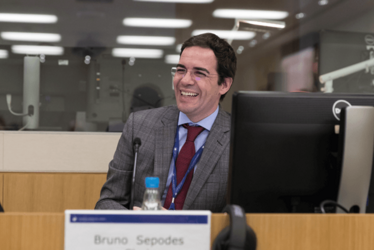No Better Time to Be Humble
Sitting Down With... Bruno Sepodes, Professor of Pharmacology and Pharmacotherapy, University of Lisbon, Portugal, and Chair of the EMA Committee of Orphan Medicinal Products (COMP).
How did it all begin?
As a child, you don’t really know what you want to do for a career, but you know what you like at school; for me, it was biology and everything related to the human body. I studied pharmacy at university and I became really interested in chemistry and medicine. After moving into toxicology, it wasn’t a big leap to enter the regulatory world – after all, knowledge in toxicology and pharmacology is very important from the non-clinical side when it comes to understanding new drugs. I became an assessor for the Portuguese medicine regulator INFARMED and then the magic happened: I ended up connecting myself with EMA. I feel very privileged to not only be doing something that I love, but to be doing it within an international arena.

How did you become active in “regulatory science?”
My interests have naturally shifted from the research setting to regulatory science as I’ve spent more time in regulatory roles. I am interested in understanding how we better develop and organize regulatory tools for understanding new drugs. I am now quite proactive in this area and I have students pursuing masters and PhDs in regulatory sciences, which I believe is incredibly useful for society because it helps bring better and safer medicines to patients.
What led to your focus on rare diseases?
I became a member of COMP in 2008. From a scientific perspective, the world of rare diseases is very much unknown, with so many questions and so few answers. The quest for knowledge is very rewarding, but the big problem is funding; we need to be able to develop proper products. I fell in love with the orphan regulation because of the way it was creating incentives for development – and so genuinely changing public health and patient lives. Between 2008 and 2012, when I became Chair of COMP, my passion really blossomed. We are seeing products based on science that are coming through the doors of the agency for the first time – they are completely innovative and have the potential to create wonderful drugs that represent the first of a new class. We see them first and give manufacturers the incentives to carry on, which is exciting!
What lessons have you learned working for EMA?
The EMA is a unique place and so eye opening in many aspects! Collaborating with EMA gives you a completely different view to working within a national setting. When you are in an academic setting, you are very focused on the lab. Even when you connect to the clinical side and get involved with translational work, the truth is that patients, patient organizations and even the industry are very far-away players. Moving to the regulatory arena – especially the EMA (the brain of the regulatory world in Europe) – allowed me to really understand patients as stakeholders.
One of the wonderful things about the EMA is the diversity; not only are you able to meet people from all over Europe, but also from all over the world, such as regulators from the US, Canada, Australia, Taiwan, and elsewhere. The diversity has an incredibly positive impact in terms of what you learn and bring home.
You recently received the EURORDIS Rare Disease Leadership Award. How did it feel?
It was very unexpected! I have never felt as if I am doing something that is outside of my job. When I was elected Chair of the COMP, I felt it was my role to not only conduct meetings but also to really get involved with the field of rare diseases and engage patients more in discussions. I can’t believe that I been given this award (or that I have been asked to give this interview).
I feel very humbled because I have learned so much through the informal interactions that I have had with patients, parents of patients and caregivers. They are unbelievable people – they are fighters and their strength is such an inspiration. I feel very privileged to work in this area and to receive this award – I will treasure it all my life! In today’s world, I think it is becoming increasingly rare to receive any sort of recognition and it is very inspiring. My work is just a small part of the overall efforts that have gone into positively changing the landscape for orphan drugs.
Rare Disease Day took place at the end of February. What comes next?
We must not stop the fight! In Europe, regulation around orphan drugs started in 2000. Before then, we had very few treatments for rare diseases and companies were not incentivized to pursue this research. Eighteen years on, and we have made significant progress; there are life-saving drugs available and we have also changed attitudes around rare diseases. I am so happy with the outcomes and I think that all European citizens should feel proud of the accomplishments. We cannot lose this momentum! So many rare diseases still need to be addressed, and there are many other concerns too, such as access to treatment and medicine costs. We need more conversations and we need the participation of every stakeholder. We must not give up because I believe the best outcomes are yet to come.
Bruno Sepodes is Professor of Pharmacology and Pharmacotherapy, University of Lisbon, Portugal, and Chair of the EMA Committee of Orphan Medicinal Products (COMP).



















